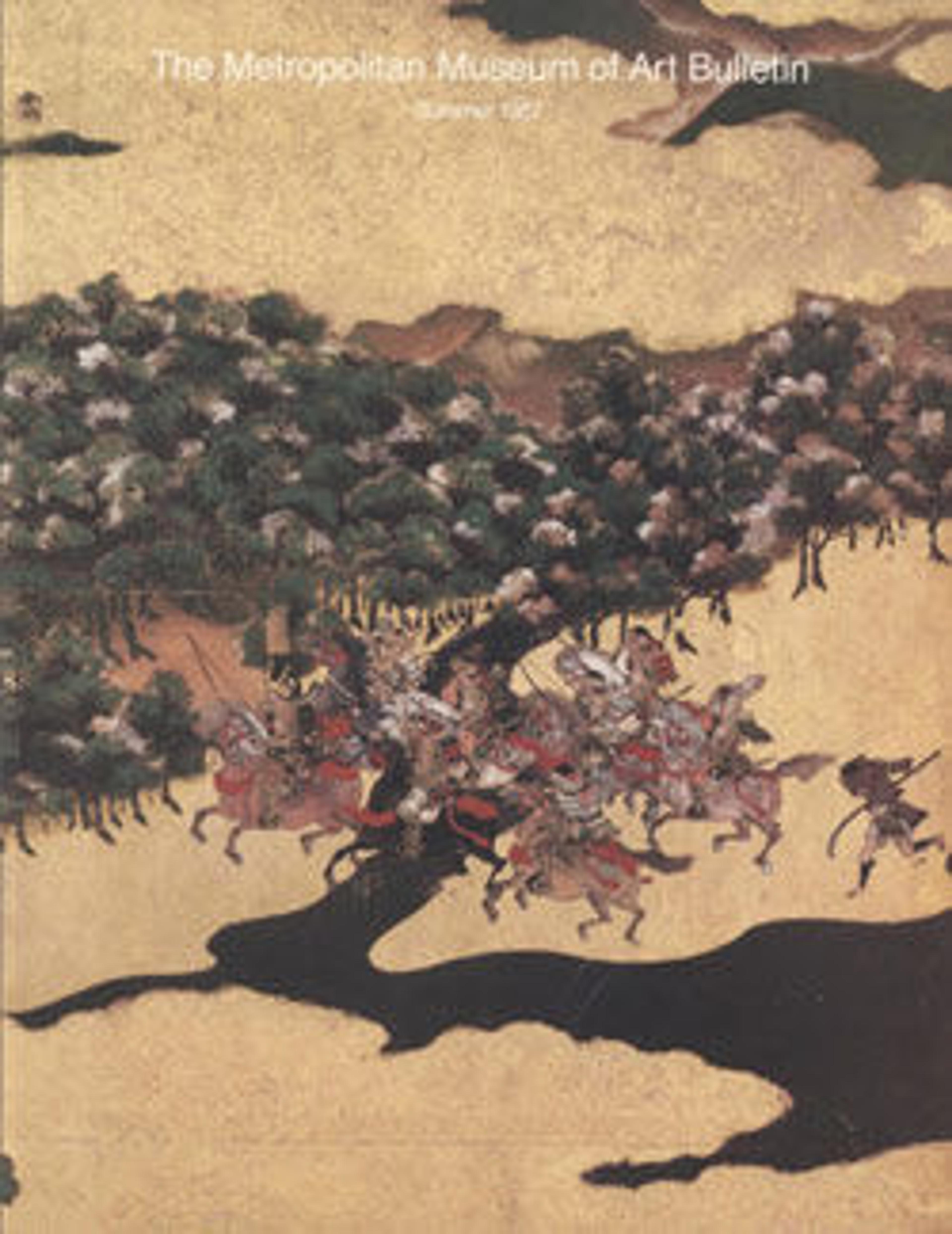White-robed Kannon
Avalokiteshvara, or Kannon in Japanese, one of the most important bodhisattvas in Mahayana Buddhism, was traditionally venerated in Zen more as a model for the contemplative life than for his traditional role as savior. This approach is reflected in the iconographic mode most favored in Zen, the white-robed Kannon. A more human image of the deity, he relaxes here near a waterfall in a woodland setting. The inclusion of Sudhana (lower right), the archetypal pilgrim youth who sought the bodhisattva in Potalaka, his island paradise, reflects Zen assimilation of Pure Land belief.
This early painting, with its skillful handling of ink in supple lines for the figure and graduated wash for the landscape, adheres closely to thirteenth- and fourteenth-century Chinese models and reveals the roots of Japanese ink painting.
This early painting, with its skillful handling of ink in supple lines for the figure and graduated wash for the landscape, adheres closely to thirteenth- and fourteenth-century Chinese models and reveals the roots of Japanese ink painting.
Artwork Details
- 白衣観音図
- Title: White-robed Kannon
- Period: Nanbokuchō period (1336–92)
- Date: 14th century
- Culture: Japan
- Medium: Hanging scroll; ink on silk
- Dimensions: Image: 45 3/4 × 20 3/8 in. (116.2 × 51.8 cm)
Overall with mounting: 82 3/4 × 26 1/4 in. (210.2 × 66.7 cm)
Overall with knobs: 82 3/4 × 28 5/8 in. (210.2 × 72.7 cm) - Classification: Paintings
- Credit Line: Purchase, Bequest of Dorothy Graham Bennett, Herbert J. Coyne Gift, Seymour Fund and Fletcher Fund, by exchange, 1985
- Object Number: 1985.120.2
- Curatorial Department: Asian Art
Audio
8830. White-Robed Kannon
0:00
0:00
We're sorry, the transcript for this audio track is not available at this time. Please email info@metmuseum.org to request a transcript for this track.
More Artwork
Research Resources
The Met provides unparalleled resources for research and welcomes an international community of students and scholars. The Met's Open Access API is where creators and researchers can connect to the The Met collection. Open Access data and public domain images are available for unrestricted commercial and noncommercial use without permission or fee.
To request images under copyright and other restrictions, please use this Image Request form.
Feedback
We continue to research and examine historical and cultural context for objects in The Met collection. If you have comments or questions about this object record, please contact us using the form below. The Museum looks forward to receiving your comments.
